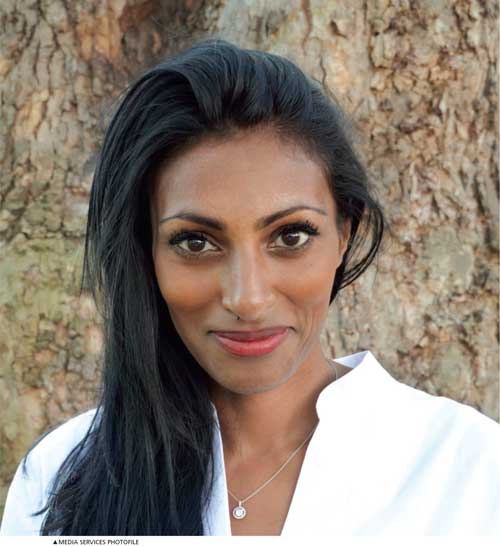Dr. Shini Somara
STEM engagement
My upbringing exposed me to a broad range of cultural differences

Q: What is the biggest challenge in making science, technology, engineering and mathematics (STEM) content accessible to a wider audience – especially for those with limited tech skills?
A: Accessibility is the main challenge in making STEM more appealing to a wide audience. The term ‘accessibility’ encompasses finding a story, gathering details, and telling the story in an engaging, balanced and accurate way.
Stories that are captivating and relevant to a wide demographic must be relatable, uncomplicated, current and easily consumed within seconds. With such parameters, STEM content competes in a tough market where producers are fighting for audience attention.
That said, I delight in the challenge of finding incredible STEM stories and providing insights into this wondrous world. In my experience, the most inspiring stories have a human and emotionally provoking angle.
Q: As a mentor to master’s and PhD students, how can the academic landscape for STEM education evolve to better support future innovators?
A: The academic landscape needs to connect more with industry and the latter needs to reach out to academia. There seems to be an unnecessary divide, even though academic-industry partnerships are fruitful. This is why I’m a keen supporter of apprenticeships.
Apprentices can obtain degrees while working in industry by ‘earning while learning.’ Stigmas still exist around apprenticeships and similar career pathways into STEM. Industry, academia and government could do more to change their attitudes towards them.
This will support the development of future innovators. As physicist David Bohm said, “the ability to perceive or think differently is more important than the knowledge gained.”
Q: How has your background in mechanical engineering and computational fluid dynamics shaped your approach to communicating complex scientific concepts to a general audience?
A: My curiosity and fascination with fluid dynamics during my mechanical engineering degree led me to R&D in computational fluid dynamics in industry.
During my five years as a research engineer, I was surrounded by experts who shared a passion for the subject. I developed a fine-tuned skill for data analysis, mathematics, and the physics of how gases and liquids behave. This experience irreversibly shaped my brain.
After completing my doctoral research, I embarked on several years of professional development in media. This calls for specific skills especially in communications, which I mostly taught myself.
Combining passion with my media skills, I’m able to translate complex STEM content into various media forms for diverse audiences. Engineering communicators are rare and were nonexistent when I embarked on a media career.
As an under-represented person in the industry, having high level qualifications in engineering was essential to compiling media content.
Q: And how did your journey as a mechanical engineer transition into a career in media broadcasting?
A: What inspired me to take the leap into media and STEM communication was the lack of diversity I experienced in the engineering field. As an ambitious young girl, I pushed through my education at breakneck speed, qualifying with my engineering doctorate by 24.
I was a young woman of an ethnic minority in a field filled with a homogenous group of older men. And I had no experience in how to deal with this.
As a result, my impostor syndrome got the better of me, keeping me shy and quiet in a field where I was more than qualified to make meaningful contributions. Despite knowing that I had great potential to make an impact in engineering, I had no voice. This motivated me to come out of hiding and develop communication skills.
Finding my voice motivated me to help others find their own. My work in media, communicating others’ STEM stories, has helped me see that we can all make a difference through our differences.
Q: As a presenter on multiple prestigious networks, what differences have you noticed in how different cultures approach science and engineering topics?
A: Cultural differences are immediately translated through the style and format of television broadcasting.
In the US, the style was always glamorous, dramatic, enthusiastic and bold. In the UK, we tend to be more grounded and conservative.
My upbringing exposed me to a broad range of cultural differences, having had a Malaysian mother. Malaysia is culturally rich and my Sri Lankan father has a strong culture of his own.
Working in television on different continents, and travelling the world for work and pleasure, has allowed me learn more about myself. I encourage everyone to do the same. Learning about others opens our minds and strengthens knowledge of our own identity.

CV IN A NUTSHELL
A mechanical engineer with a doctorate in fluid dynamics and experience as a fluid dynamicist, Dr. Shini Somara is an established STEM (science, technology, engineering and mathematics) media producer and broadcaster. She translates complex STEM topics into television, digital and literary content.
Somara has published seven books and her latest (Engineers Making a Difference) was donated to secondary state schools in the UK.
After two decades of presenting science, technology and innovation on BBC, Channel 4, PBS Digital, Al Jazeera, Sky and UKTV, Somara went on to host two YouTube series (Crash Course Physics and Crash Course Engineering), which have registered over 61 million views since 2016.
FACT FILE
FAMILY
Sri Lankan father
Malaysian mother
Younger twin sisters
SCHOOLING
Henrietta Barnett Grammar School
Queen Elizabeth’s Girls’ School
HIGHER EDUCATION
Engineering doctorate in computational fluid dynamics
First Class Bachelor’s in mechanical engineering
PRESENT OCCUPATIONS
Media broadcast on television and online platforms
Author of seven books
COUNTRY OF RESIDENCE
UK
CITY OF RESIDENCE
London
